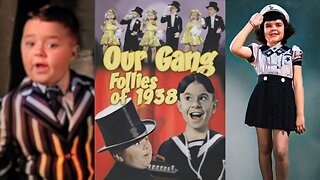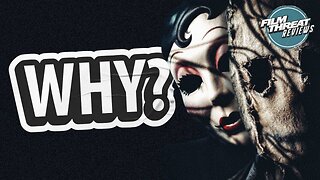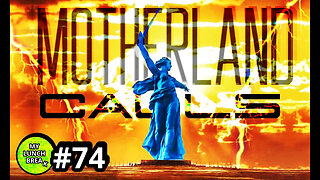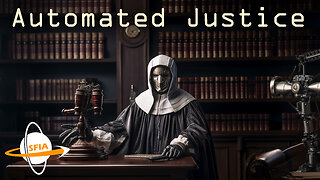DANGER LIGHTS (1930) Louis Walheim, Jean Arthur, Robert Armstrong | Adventure, Drama | B&W
Danger Lights is a 1930 American Pre-Code drama film, directed by George B. Seitz, from a screenplay by James Ashmore Creelman. It stars Louis Wolheim, Robert Armstrong, and Jean Arthur. The film was the first ever shot in the new Spoor-Berggren Natural Vision Process.
SYNOPIS
The tough boss of a railroad yard befriends a young hobo, and unwittingly places in jeopardy his relationship with the woman he loves.
Dan Thorn (Louis Wolheim) is a divisional boss on the Milwaukee Railroad, based in Miles City, Montana. The film opens with a landslide across the track and Thorn dispatching, then accompanying, a repair crew to clear it. Several hobos are lounging nearby and are put to work helping the crew. Thorn discovers that one of the hobos, Larry Doyle (Robert Armstrong), is a former railroad engineer who lost his job over insubordination. Thorn finds he likes the man and demands that he better his life by returning to work for the railroad. Doyle repeatedly refuses even as he starts the work, but Thorn is a hard man to say no to, and Doyle is hired.
Thorn is engaged to Mary Ryan (Jean Arthur), but his job leaves him unable to give her much time or attention. When an engineer's wife dies, Thorn spends time with the man to keep him from getting drunk and endangering his railroad job. This leaves Thorn unable to attend a social event, so he asks Doyle to go with Mary instead. Afterwards, the two are using a railway bridge to walk home when a fast train approaches. Doyle whisks Mary into a trackside refuge and kisses her as the train rushes by.
Mary still cares for Thorn, but she falls in love with Doyle. Finally he persuades her to run away to Chicago with him and get married. But as they walk along the tracks toward the station, Doyle's foot becomes trapped in a railroad switch as it is remotely reset for the train. At this point Thorn approaches and threatens Doyle over Mary, but when he realizes the man is trapped, he manages to pull Doyle clear of the switch at the last moment. Doyle is safe but Thorn is hit by the train and seriously injured.
The local doctor says Thorn will die unless he can be taken to Chicago for brain surgery within 5 hours, which would require a new speed record for the trip. Doyle volunteers to drive a special train and is able to accomplish the feat. Thorn is saved.
Two weeks later, Thorn is taken back to Miles City by train, conscious but depressed. At the station, Mary is the first to board, and promises to return to him. But Thorn says that during his enforced rest he has come to realize that he is already married—to the railroad. He frees her to marry Doyle with his blessing. Then, overhearing railwaymen outside speaking as if he is done for, he shouts at them to get back to work. They do, and his depression lifts.
CAST & CREW
Louis Wolheim as Dan Thorn
Robert Armstrong as Larry Doyle
Jean Arthur as Mary Ryan
Hugh Herbert as Professor
Frank Sheridan as Ed Ryan
Robert Edeson as Tom Johnson
Alan Roscoe as Jim
William P. Burt as Chief Dispatcher
James Farley as Joe Geraghty
Directed by George B. Seitz
Written by James Ashmore Creelman
Produced by William LeBaron
Cinematography Karl Struss, John W. Boyle
Edited by Archie F. Marshek
Distributed by RKO Pictures
Release dates November 15, 1930 ( Premiere-Chicago), December 12, 1930 (U.S.)
Running time 74 minutes
Country United States
Language English
NOTES
Danger Lights was filmed during a period when some movie studios were experimenting with various widescreen film formats. As part of this trend, two versions of the film were created. One used standard 35mm film and Academy ratio, and the other used an experimental 65mm widescreen format at a 2:1 aspect ratio. This latter process was called "Natural Vision" and was invented by film pioneers George Kirke Spoor and P. John Berggren. The Natural Vision print of the film was reportedly screened at only two theaters (the only two with the equipment necessary to show the film), the State Lake Theater in Chicago and the Mayfair Theater in New York, and no copies of it are known to exist today. Danger Lights is the only film created using this process, and the entire effort to move to wide-screen was shelved for several decades because of the increased costs of both production and presentation. The film was taken two years after the Milwaukee Road exited bankruptcy and five years before it re-entered bankruptcy and placed under trusteeship.
In 1958, the film entered the public domain in the United States because the claimants did not renew its copyright registration in the 28th year after publication.
-
 21:24
21:24
Lost n Found Films
6 days agoOUR GANG FOLLIES (1938) George McFarland, Carl Switzer, Darla Hood | Comedy | COLORIZED
34 -
 16:43
16:43
TudorDixon
1 day agoHow was Harrison Butker Wrong? | The Tudor Dixon Podcast
57.6K131 -
 2:39:22
2:39:22
Drunk3PO
1 day agoStar Wars, Achromatic Chronicles Green, & More | Drunk3po Live
63.5K15 -
 7:11
7:11
Film Threat
1 day agoTHE STRANGERS: CHAPTER 1 | Film Threat Reviews
51.3K12 -
 25:22
25:22
MYLUNCHBREAK CHANNEL PAGE
1 day agoTartaria, Russia & The Old World?
57.4K61 -
 15:08
15:08
justintech
1 day agoCorsair Vengeance i8200 Review - 14900K + 4090
41.3K2 -
 11:31
11:31
ryanhoguepassiveincome
23 hours agoTOP 5 NICHES 🔥 Print on Demand Niche Research # 207 — (5/12/2024)
38.3K8 -
 51:31
51:31
Science & Futurism with Isaac Arthur
1 day agoAutomated Justice
36.9K9 -
 8:05
8:05
Ethical Preparedness
1 day agoEASY Homemade Allergy Medicine - Medical Prepping for SHTF - Natural Medicine
19.3K16 -
 20:48
20:48
JoBlo Originals
1 day agoWhat Happened to WES STUDI?
25.6K18